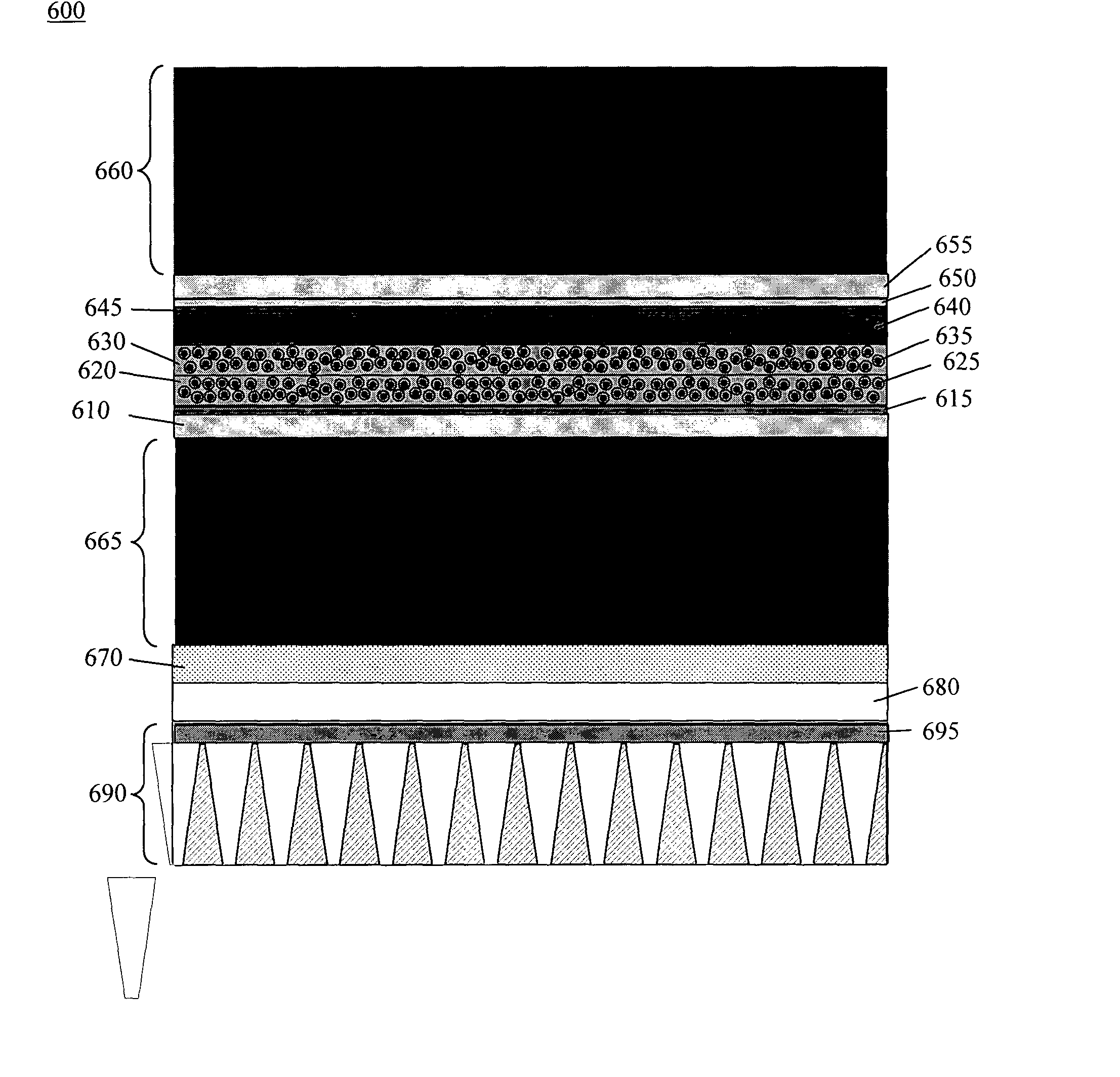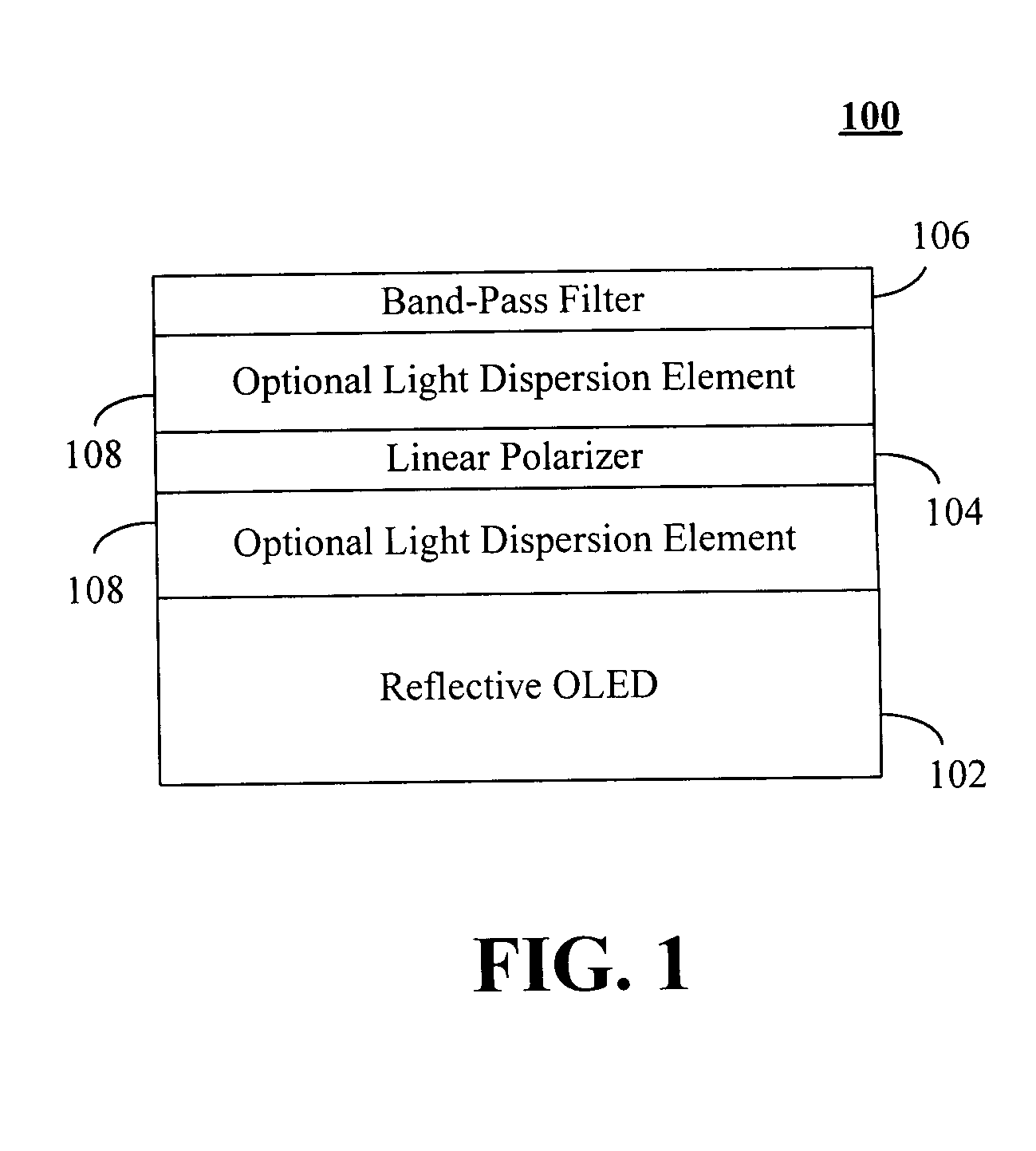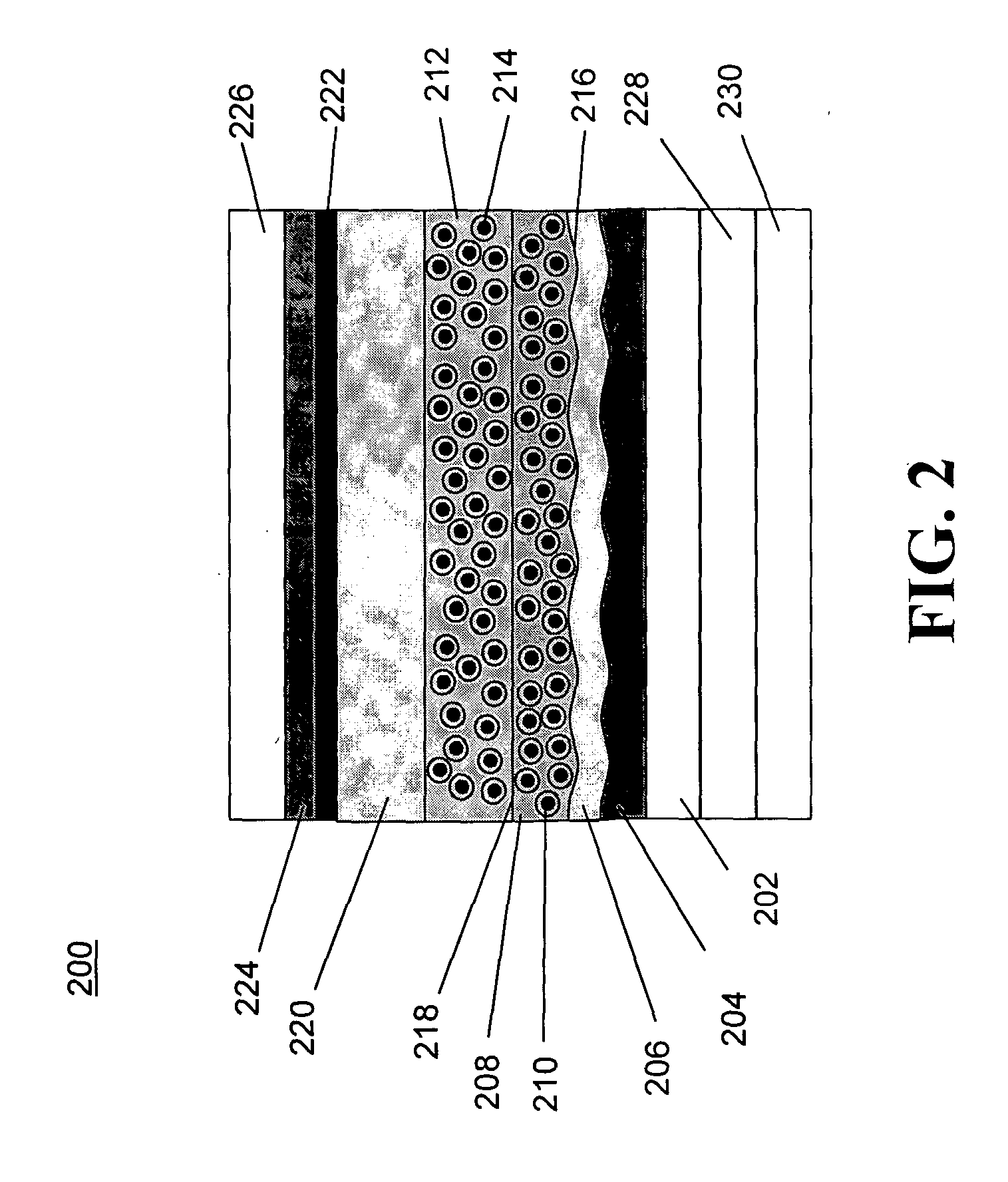Polarized light emitting devices and methods
a light-emitting device and organic technology, applied in the field of polarized organic light-emitting devices, can solve the problems of reducing the life span of the oled, obviating the problem of washout, and the same drawbacks
- Summary
- Abstract
- Description
- Claims
- Application Information
AI Technical Summary
Problems solved by technology
Method used
Image
Examples
Embodiment Construction
A polarized organic light emitting device (OLED) including a linear polarizer and / or a band-pass filter may be fabricated that substantially reduces or eliminates unwanted ambient light reflections. FIG. 1 illustrates one exemplary embodiment of such a device 100 that includes a plane polarized light emitting OLED 102 with a reflective electrode or reflective backing, with linear polarizing film 104, and with a band-pass filter 106 laminated or otherwise attached to its front surface. Alternatively, the polarizing film104 and band-pass filter 106 may be separated from the device 100 by some distance and housed in a structure that maintains the relationship of the polarized emission of the OLED 102 and the polarization axis of the polarizing film 104. Optional anti-reflective or antiglare coatings may be used to reduce surface reflections of the separated elements. The linear polarizing film 104 transmits one linearly polarized state of light and absorbs the other. The polarizing fil...
PUM
| Property | Measurement | Unit |
|---|---|---|
| spectrum | aaaaa | aaaaa |
| reflectivity | aaaaa | aaaaa |
| emission spectrum | aaaaa | aaaaa |
Abstract
Description
Claims
Application Information
 Login to View More
Login to View More - R&D
- Intellectual Property
- Life Sciences
- Materials
- Tech Scout
- Unparalleled Data Quality
- Higher Quality Content
- 60% Fewer Hallucinations
Browse by: Latest US Patents, China's latest patents, Technical Efficacy Thesaurus, Application Domain, Technology Topic, Popular Technical Reports.
© 2025 PatSnap. All rights reserved.Legal|Privacy policy|Modern Slavery Act Transparency Statement|Sitemap|About US| Contact US: help@patsnap.com



